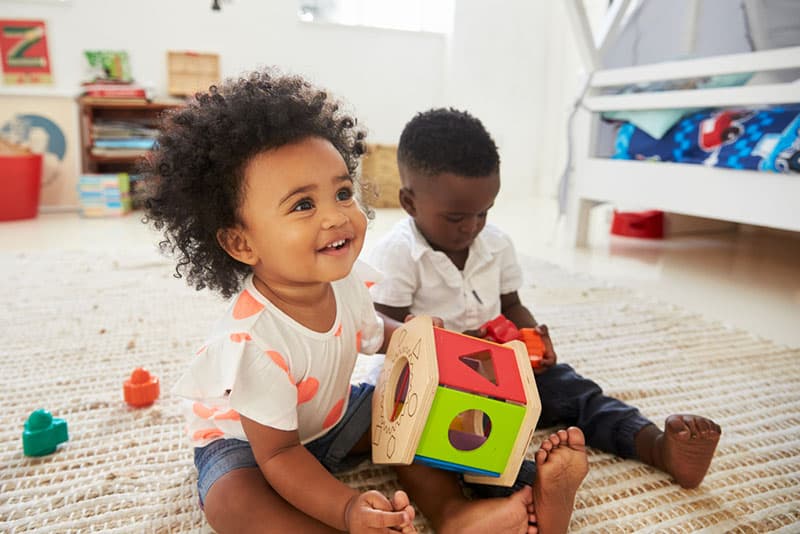Your little one’s most active motor development period happens within their first 3 years, but the most significant one happens when they’re around 9-10 months of age – the pincer grasp.
The pincer grasp is exactly what it sounds like, a developmental milestone where your child learns to pick an object up by using their thumb and index finger and pinching it firmly like a pair of tweezers.
Of course, the development of motor skills doesn’t really stop in most cases, it’s just that the rapid leaps that occur within this period of time are so significant that they dwarf any further ones in importance.
While it may seem simple to us now, mastering the pincer grip is a great achievement for your child.
This is because it opens up so many new avenues of exploration for them now that their fine motor skills are being perfected.
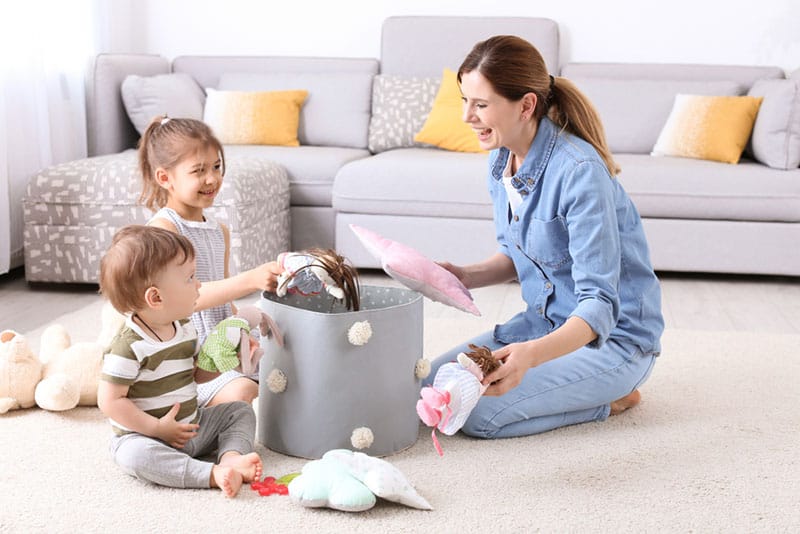
It won’t be long now until they start using pencils and crayons and begin drawing and coloring, maybe even managing to write their first words out.
Keep an eye on your walls, though, as cleaning marker and crayon lines is going to be a challenge of its own!
The Stages That Lead Up To The Pincer Grasp
Naturally, the pincer grasp doesn’t just come to the baby overnight. There are a few levels of fine motor development prior to it, though, in most cases, it still happens during your little one’s first year.
It all starts with the palmar grasp, a technique where young children pick objects up by rolling their fingers back into their palm, something akin to a scoop or a claw.
It’s a rather clumsy way of picking up objects as the item needs to be placed in their fingers or the fingers need to scoop under the item in order to pick it up. This tends to lead to a lot of frustration on the baby’s behalf.
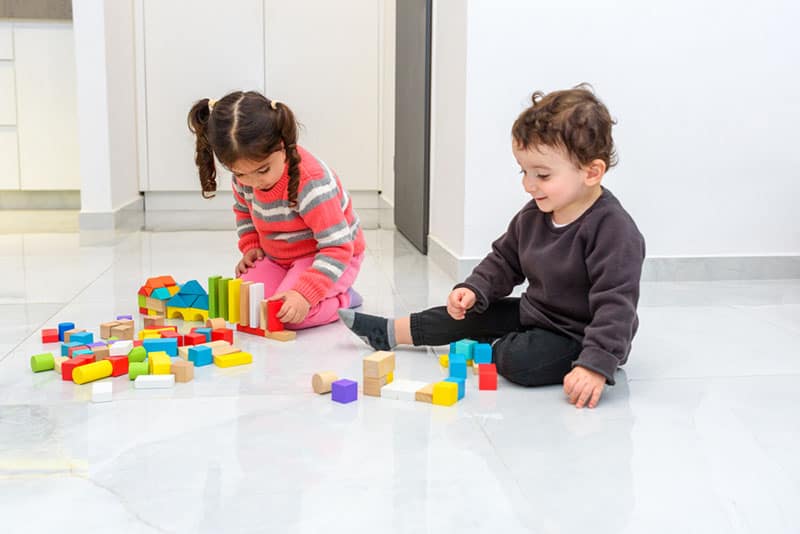
Later on though, the palmar grasp gets a bit more refined and evolves into a raking grasp, where the angle of assault on the object is reversed.
Instead of going under, the baby’s hand now seeks to go over the object and pull it back into their grasp by using their fingers like a sort of rake.
Not a huge improvement when looking at it from an adults perspective, but it’s a step forward nonetheless.
As your little one continues to grow, they’ll reach the next step and the precursor to the actual pincer grasp called the inferior pincer grasp.
The difference here is that in the inferior pincer grasp, the baby picks objects up by holding them between the soft, pillowy padding beneath the thumb and the index finger.
Sounds a tad clumsy, doesn’t it? That’s because it still kind of is and it doesn’t allow proper object manipulation afterwards.
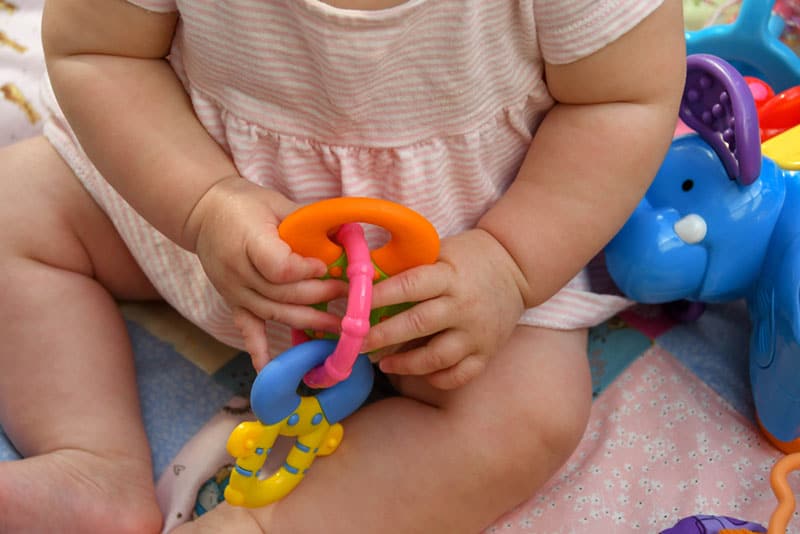
It still lets the child pick small items up, though, something the previous two grasps didn’t.
Plus, they don’t have to resort to using the whole hand just for one item.
Finally, about a month or two after the inferior pincer grasp develops, your child should discover the superior pincer grasp, which is the subject of this article’s discussion.
This is when the baby learns how to properly grasp small objects while still maintaining a firm grip on them, meaning there is little to no risk of dropping them.
Plus, when pincer grasp development occurs and your child masters it, you’ll be able to transition them to finger foods as there will be less risk of them making a mess of themselves and eating nothing.
A warning about delayed motor skill development
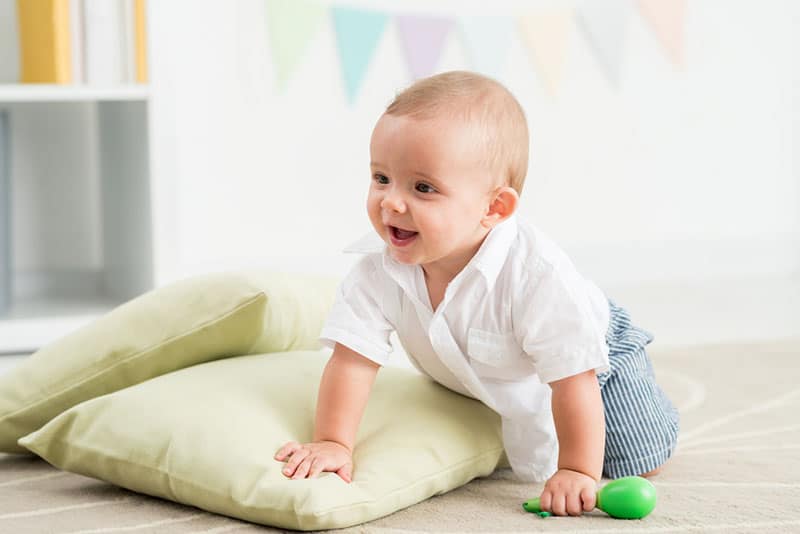
The period when a child should grasp the use of the superior pincer grasp is when they’re roughly between 8 months to a year old.
If your child has reached the 12-month stage without even remotely achieving this, there may be some issues that you might want to remedy quickly or else you may risk further delay to their motor development.
Pediatricians call it a developmental coordination disorder and suggest urgent action, whether it’s taking a more direct approach to teaching your child the intricacies of the pincer grip or through the use of occupational therapy.
Either way works, it just depends on whether you think the best course of action is for you to help them or the occupational therapist.
And, don’t worry, other than inaction there are no wrong choices here.
Plus, this disorder doesn’t happen too often and is easily remedied so it shouldn’t linger in the back of your mind for no reason.
4 Activities You Can Use To Encourage Pincer Grasp And Fine Motor Development
Whether it’s dealing with the developmental coordination disorder or simply trying to further refine your little one’s fine motor skills, there are plenty of pincer grasp activities you can do:
1. Sensory bins
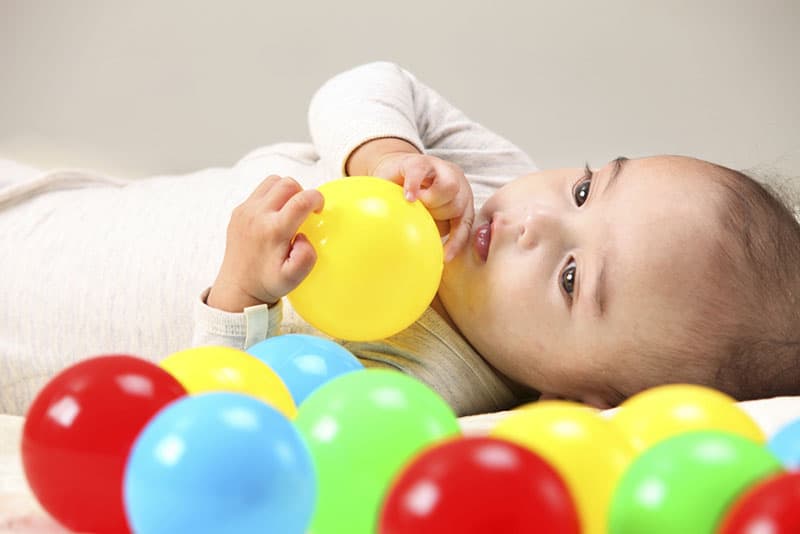
An all around fun method for your child to explore new senses and practice grasping different objects, a sensory bin is probably the most ideal way of aiding further development.
Not to mention that it’s easy enough to assemble at home.
All you need is a container with an opening wide enough to fit a hand through and then some so it doesn’t get stuck, and things that would be interesting to touch – preferably things with vibrant colors or odd shapes to attract your baby’s attention.
Think things like marbles, pom poms, rice mixed with food coloring, cheerios, shiny buttons, building blocks, or even play-dough. Anything can be used.
Try to stick to items that aren’t the same so your child can learn to grasp objects of different sizes.
The best part is that you can make it even more entertaining by making the sensory bin into a small diorama if you want to get a bit more creative. The sky’s the limit.
Do exercise a little caution, though, if you’re going to be using sensory bins. Many of these things are choking hazards and our little ones explore with their mouth as much as they do with their hands.
And we all know they’re likely to put anything in there just to see if it tastes good or not.
2. Big toys with lots of interactive pieces
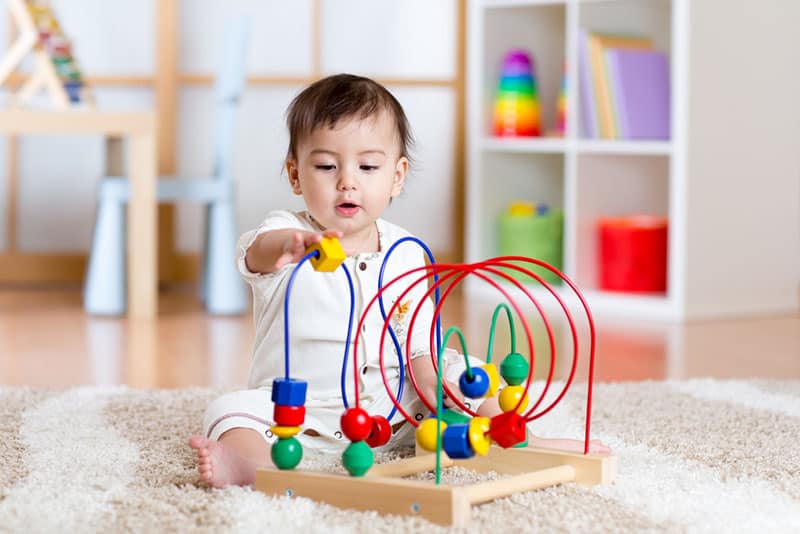
By this, I mean things like baby’s first kitchen or baby’s first workshop.
Toys that mimic the look and design of a part of the house with stickers used for added effect.
But the stickers aren’t the main draw here, no no, it’s all of the various interactive knobs, dials and zippers littered around the toy that we’re interested in.
They’ll both keep your child entertained and help them develop their fine motor skills further.
3. Small toys with lots of pieces
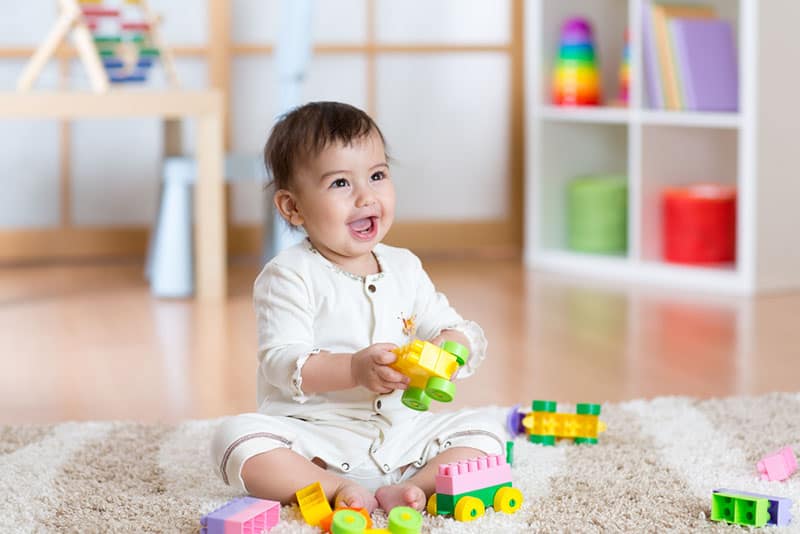
The next step in your baby’s development cycle is to learn about proper hand-eye coordination and how to maneuver more intricate objects while trying to assemble them.
This is where toys like nesting dolls or LEGOs come into play and are probably the best go-to for this kind of activity.
They’re easy enough to both assemble and disassemble while keeping your child entertained.
The same warning applies as it did with the sensory bins, though, due to the very small pieces involved.
4. Cups and utensils
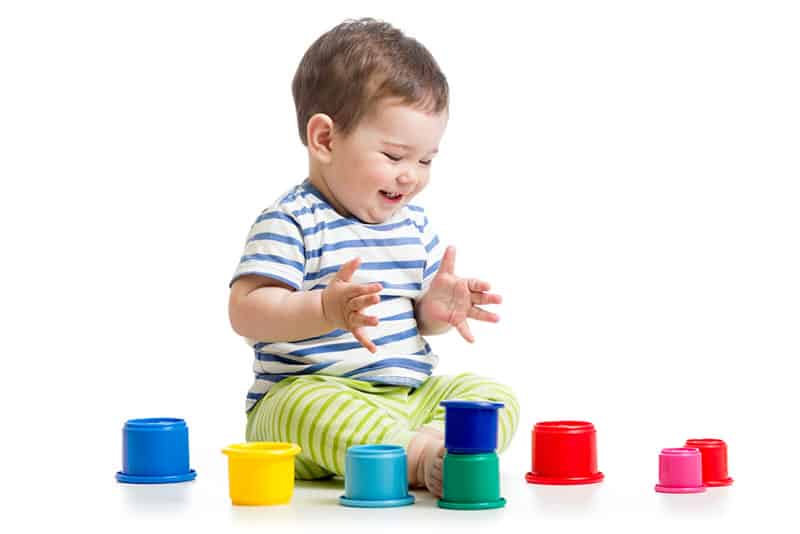
Surprisingly, the kitchen is where we find the most helpful tools.
Getting a toy tea set is ideal and you can watch as your baby learns how to properly hold a teacup by the handle.
You can always use the cups you have lying around the kitchen, but make sure they’re not made out of glass or too heavy – you don’t want your baby to injure themselves.
In Conclusion
Mastering the pincer grasp is a fine developmental milestone for your baby to reach.
If they haven’t managed to learn it by the time they reach their first birthday, consider consulting a pediatrician to see if there’s anything wrong with their development process and act accordingly.
Most of the time there shouldn’t be a problem, but it doesn’t hurt to check.
In any case, your child will be well on their way to becoming a fully fledged grown-up before you know it.
https://findyourmomtribe.com/stories/pincer-grasp/
Like this post? Please share or pin it for later. You can also stay in the loop and follow us on Facebook, Instagram and Pinterest.
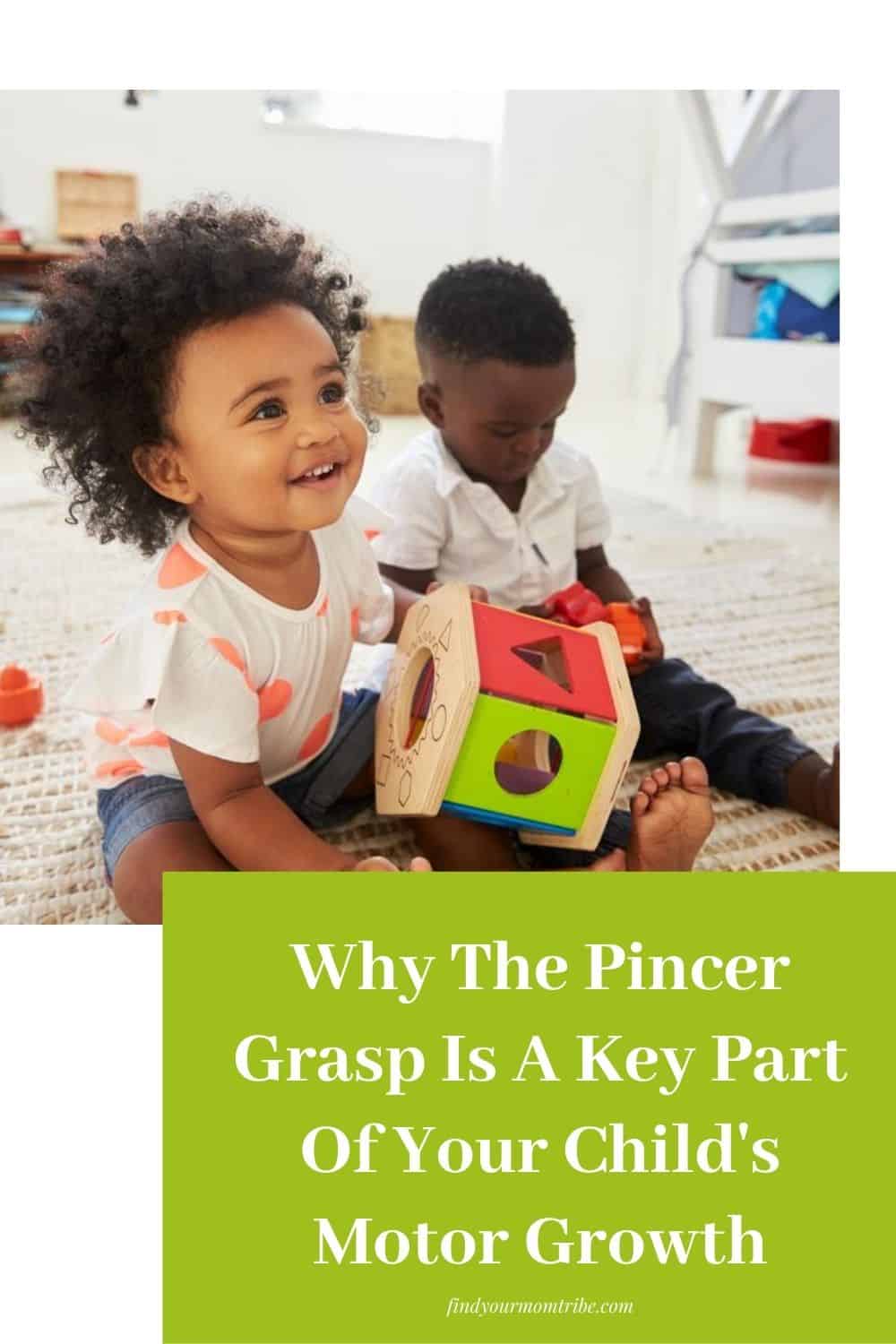
This post contains affiliate links. Please see our full disclosure or more info.

